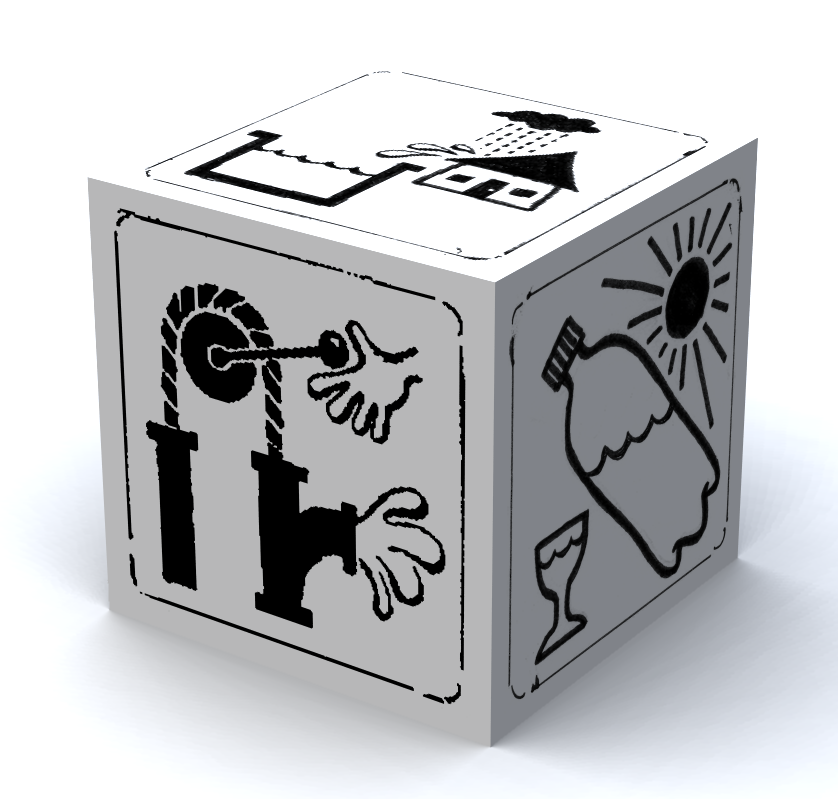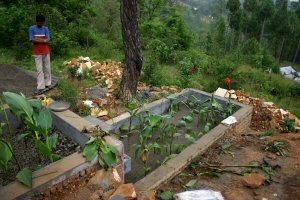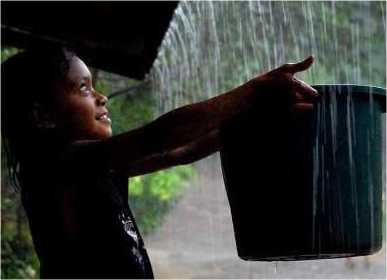|
|
| Line 50: |
Line 50: |
| | [[Image:latrine.png|right|100px|link=Communal Latrines]] | | [[Image:latrine.png|right|100px|link=Communal Latrines]] |
| | * '''NEW ARTICLE PAGE: [[Communal Latrines|<font size="2">Communal Latrines</font>]]''' - This article covers the topic of communal latrines, also called institutional or school latrines. Much of the material in this article is based on project successes in the Sudan. This is a portion of the document of Technical Guidelines, outlining best practices for the development of the 14 types of water supply and sanitation facilities in the Sudan. Several of them are communal (multi-user) latrines. | | * '''NEW ARTICLE PAGE: [[Communal Latrines|<font size="2">Communal Latrines</font>]]''' - This article covers the topic of communal latrines, also called institutional or school latrines. Much of the material in this article is based on project successes in the Sudan. This is a portion of the document of Technical Guidelines, outlining best practices for the development of the 14 types of water supply and sanitation facilities in the Sudan. Several of them are communal (multi-user) latrines. |
| − | [[File:sust portal icon.png|right|100px|link=Sustainability Portal]] | + | [[File:Community savings.jpg|right|100px|link=Community Based Savings]] |
| | * '''NEW ARTICLE PAGE:''' [[Community Based Savings|<font size="2">'''Community Based Savings'''</font>]] - Community-based saving is a microfinance model that is considered to be an effective method for financing projects in sustainable sanitation and water management. This is an effective method for saving a small amount of money by organising or joining a saving group of up to 25 people. These people might be colleagues, friends or neighbours coming from the same community. The method is very simple and easy to implement. | | * '''NEW ARTICLE PAGE:''' [[Community Based Savings|<font size="2">'''Community Based Savings'''</font>]] - Community-based saving is a microfinance model that is considered to be an effective method for financing projects in sustainable sanitation and water management. This is an effective method for saving a small amount of money by organising or joining a saving group of up to 25 people. These people might be colleagues, friends or neighbours coming from the same community. The method is very simple and easy to implement. |
| | | | |
Welcome, bienvenue and bienvenido to Akvopedia!
|
|
Welcome to Akvopedia, the open water and sanitation resource that anyone can edit. We strive to improve water and sanitation projects through knowledge exchange on smart and affordable technical solutions and effective approaches. Akvopedia now contains 2,211 articles primarily in English, including some in French and Spanish. Akvopedia is hosted and managed by Akvo Foundation.
Water Portal
|
| The Water Portal contains information on water collection, pumping and transportation, storage, treatment, and use of water.
|
Sanitation Portal
|
| The Sanitation Portal contains information on toilets, collection, transportation, treatment, use of products, hygiene, and training materials.
|
Finance Portal
|
| The Finance Portal contains information on the costs needed to finance, how to finance these costs, and how to monitor finance.
|
Sustainability Portal - NEW!
|
| The Sustainability Portal contains information on numerous sustainability frameworks, tools, and methods, using the F.I.E.T.S approach.
|
|
|
|
What's happening now
|
| NEW ARTICLE PAGE: Water Reuse / Greywater
Water reuse can include reusing water from many sources. Sometimes it is used water from bathing or dishwashing, and other times it is managing agricultural runoff. It may also be keeping/extending the water you have in reservoirs or groundwater and taking measures to reduce evaporation all in support of reuse. Reusing waste water is also very popular worldwide, especially for irrigation. Other names include “water recycling,” “water purification,” “reclaimed water,” “recycled water,” “reuse water,” and “repurified water.”
|
More news
|
- NEW ARTICLE PAGE: Integrated Water Resources Management (IWRM) - IWRM is based on the understanding that water resources are an integral component of the ecosystem, a natural resource, and a social and economic good. Managers, whether in the government or private sectors, have to make difficult decisions on water allocation. More and more they have to apportion diminishing supplies between ever-increasing demands. Drivers such as demographic and climatic changes further increase the stress on water resources.
- NEW ARTICLE PAGE: Communal Latrines - This article covers the topic of communal latrines, also called institutional or school latrines. Much of the material in this article is based on project successes in the Sudan. This is a portion of the document of Technical Guidelines, outlining best practices for the development of the 14 types of water supply and sanitation facilities in the Sudan. Several of them are communal (multi-user) latrines.
- NEW ARTICLE PAGE: Community Based Savings - Community-based saving is a microfinance model that is considered to be an effective method for financing projects in sustainable sanitation and water management. This is an effective method for saving a small amount of money by organising or joining a saving group of up to 25 people. These people might be colleagues, friends or neighbours coming from the same community. The method is very simple and easy to implement.
|
Contributing to Akvopedia
|
| Share your news and knowledge on water and sanitation by contributing articles to the Akvopedia. We've used the same conventions as the well-known online resource Wikipedia, so adding and editing articles is quick and easy to learn. This graphical guide will get you started; more detailed information about editing wiki articles is available in the help pages: Help:Contents
|
Editorial support
|
|
Do you have quality content that you would like to contribute to Akvopedia, but lack the time or resources to upload it? Akvopedia offers free editorial services and always appreciates suggestions and links to expand our WASH wiki. Please contact our editor Winona Azure at winona akvo.org. Thank you for visiting! akvo.org. Thank you for visiting!
|
|
|
|







